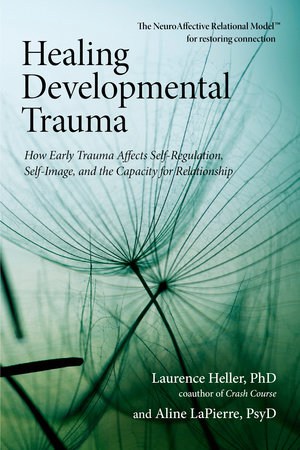Therapy
An Overview of NeuroAffective Relational Model (NARM) Therapy
THC Editorial Team January 16, 2022

Contents
- Overview
- What Is the NeuroAffective Relational Model?
- What Is NARM Therapy?
- How Does NARM Therapy Work?
- The NARM Core Survival Styles
- What Conditions Are Commonly Treated With NARM Therapy?
- The Potential Benefits of NARM Therapy
- The Effectiveness of NARM Therapy
- Summary/Key Takeaways
Therapy often focuses on an adverse event and helps the affected individual work through resulting issues and obstacles. At times, however, focusing on the dysfunction only reinforces it.1 Newer, more contemporary types of counseling are designed to help people use their strengths to overcome lingering issues from the past by focusing on present experience.1 These treatments help individuals learn how their current behavior and thoughts are related to unresolved problems. One of these types of therapy is based on the NeuroAffective Relational Model (NARM).
What Is the NeuroAffective Relational Model?
NARM views trauma as any adverse occurrence that happens during childhood, especially repetitive occurrences that lead to disconnects within the mind-body system, resulting in difficulty with proper development into adulthood. This can show itself in many ways, such as in challenges with building meaningful attachments and relationships with others. It is frequently referred to as complex trauma.2
This trauma could be incurred by various aspects of neglect, such as when a child isn’t given positive reinforcement or recognition for achievements, especially when this show of support is provided to others in the family unit. The child then is unable to develop a healthy sense of self, causing them to feel like there’s something wrong with them or that they aren’t “good” enough to be loved or supported.3
This can cause many challenges, including anxiety, shame, self-hatred, and violence.1 The resulting lack of secure attachment can cause a child to grow up struggling to build relationships with friends or romantic partners, often perpetuating the rejection they felt from parents or caregivers. Additionally, because many learn how to be a parent from their caregivers, adverse childhood experiences can unintentionally lead the affected individuals to act out their trauma on their children.4
Focusing primarily on adulthood issues arising from early trauma, NARM helps individuals identify and resolve past events by addressing continuing behavior patterns in relation to attachment, relationships, and development. NARM posits that it is not necessarily the traumatic experiences that cause diminished connectedness in adulthood but the coping mechanisms born out of early-life fear.1 The child latched onto these coping patterns, and the adult, through NARM therapy, can learn to shed them.
NARM focuses on the connection between people’s biological and psychological development. It seeks to show the effect of difficulty connecting to others on a person’s psychological, physiological, and relational experiences. It uses somatic mindfulness and existing strengths to help clients break free of immature coping patterns.1
What Is NARM Therapy?
Using this model, NARM therapy helps individuals to identify the often-unconscious thoughts and beliefs that they developed and used during childhood so that they can disable the defense mechanisms that currently hinder their ability to form healthy and reciprocal attachments.1
NARM therapy pioneer Laurence Heller posited that unmet needs during childhood could have a lasting impact on the way people view themselves and the world around them.1 They may continue to seek the validation they didn’t receive when they were children, or they may have internalized expectations that others will treat them like their caregivers did. Either way, these individuals are likely to approach future relationships in a way that leads to unfulfillment, disappointment, or even abuse at the hands of others. Past trauma may also lead to mood disorders, substance use, and other psychopathology from impact to a person’s bodily system.5
An integrated approach that utilizes aspects of several types of psychotherapy, NARM therapy is designed to help individuals use the strengths of the successfully developed areas of their psyche to identify areas that require healing. This present-focused approach doesn’t emphasize excessive focus on the past; instead, it encourages people to stay in the present moment and embrace mindfulness throughout the healing process.1
How Does NARM Therapy Work?
Following complex trauma, the body’s systems may not work together the way they are meant to. Psychological disconnects may lead to the body not properly regulating necessary physiological functions—such as heart rate, respiration, blood pressure, digestion, even sleep patterns—and emotional responses.
To help individuals reconnect and bridge the gap between mind and body, NARM therapy focuses on five organizing principles related to core capacities that allow people to have a healthy sense of self, develop the capacity for meaningful intimacy, and regulate both biological and emotional responses. These include:1,5
- Supporting connection and organization
- Exploring identity
- Supporting emotional completion
- Working in present time
- Supporting re-regulation of all systems of the body.
Further, NARM identifies fice developmental life themes required for a coherent sense of self and mind-body connection.1,5
- Connection: The ability to be in touch with oneself and others and feel belonging
- Attunement: The ability to recognize one’s own needs and reach out for help when one cannot meet their needs alone
- Trust: The ability to have faith in oneself and one’s choices as well as others; healthy dependence and interdependence
- Autonomy: The ability to set limits, speak one’s mind without feeling guilt or fear, and set boundaries
- Love-Sexuality: The ability to open one’s heart to loving relationships with themselves and others and embrace sexual intimacy in viable, healthy relationships
The NARM Core Survival Styles
When childhood trauma and difficulties interrupt the development of the core capacities, people can develop one or several of five adaptive survival styles to cope with the dysregulation, disorganization, and isolation caused by the neglect of their core needs. In adulthood, these survival styles cause disconnection from the body, distorted identity, and inability to self-regulate. Though these survival styles are limiting, people are often too afraid to break free of them.5 Through NARM therapy, clients experience growth by strengthening their developed skills and breaking down barriers to fulfill their five core needs.1
Connection Survival Style
People with this survival style usually feel disconnected from themselves, their bodies, and other people. There are two subtypes, the thinking subtype, in which people’s consciousness is more disconnected from their body and they live primarily in their head, valuing their thoughts and logic over emotions, and the spiritualizing subtype, in which people focus on the energetic field and value the ethereal. This survival style develops from early shock and attachment trauma, resulting in high arousal states that make the person feel constant impending dread and doom. They often lack a cohesive identity and experience isolation and loneliness.1
NARM therapy can help individuals with the connection survival style safely explore their fear of connection. Rather than focusing on the symptoms of this fear, the pain, and the loneliness, NARM therapy addresses the disorganization by tracking moment-to-moment contact or experiences during sessions, inviting clients to get in touch with their emotions to return their consciousness to their bodies safely, and exploring their attachment dynamics.1
Attunement Survival Style
Those with the attunement survival style find it difficult to know, allow, or express their needs because they are associated with humiliation, loss, and rejection. They usually attune easily to others’ needs and act as caretakers but neglect their own needs. They can find themselves in codependent relationships where they are doing most of the giving. This style can develop when an infant’s caregiver is not attuned to their needs, cannot provide adequate nurturing, or is generally absent. They often feel a lack of fulfillment due to living with unmet needs.1
Rather than revisiting the abandonment they experienced and consequently retraumatizing the individual, NARM therapy teaches individuals with this survival style to tolerate expansion and fulfillment of self. In addition to helping them learn how to express their needs, NARM therapists work to guide their clients through a series of realizations, namely that the abandonment they fear has already occurred, that their belief of not deserving is false, and that in their excessive giving they neglect and abandon themselves.1
Trust Survival Style
People with the trust survival style are often competitive and want to feel powerful and in control. Because they try to control others, they can be manipulative, deceitful, and ruthless. They tend to resort to anger, drugs, alcohol, and violence. This survival style develops when a child’s needs are attacked and used against them by self-serving caregivers; their natural childhood dependency becomes painful and shameful. The child is rewarded for carrying out their caregivers’ ambitions, such as in cases of a “stage mom” or “football dad” with excessive expectations and demands. They learn that love and care are contingent upon performance of their caregivers’ ideal.1
Those with the trust survival style are typically resistant to therapy because they feel it connotes powerlessness, and they constantly try to remain the one “in power” in the therapeutic relationship. They often cease treatment when they feel threatened. Because of this, one of the core therapeutic goals is to help the client become familiar with and see the strength in vulnerability. The NARM therapist helps clients develop healthy relational dependency, compassion for their underlying powerlessness, and increased authenticity.1
Autonomy Survival Style
Adults with this survival style can be kind and openhearted but lack autonomy, independence, and boundaries. They tend to be people-pleasers in their relationships because their caregivers’ love was contingent upon pleasing them. This survival style begins developing in the 18-month to the two-year range when caregivers’ fear and anxiety cause them to undermine their child’s growing independence. This often creates households that are rigid and overcontrolling.1
Those with the autonomy survival style often feel paralyzed by their internal contradictions, judgments, and demands. Therapists must avoid their clients’ requests to choose a side in these conflicts because it will foster resentment and people-pleasing behaviors in the client, not growth. Therapists must strike the balance of having a clear idea of what the client wants from therapy without having an agenda for their client. They steer clear of taking sides while helping the client explore internal conflicts, reflecting their self-imposed pressures, and encouraging the development of trust and self-confidence.1
Love-Sexuality Survival Style
People who have this survival style are usually energetic and successful; however, they generally have unrealistic standards. Their self-esteem may be contingent upon meeting said standards, and so they are hypercritical and try to improve themselves obsessively. They reject others out of a fear of vulnerability and unwillingness to be hurt. This style develops because of early heartbreak, particularly between four and six years old and 12 and 15 years old. In the earlier stage, this survival style can be caused by caregivers’ rejection of natural expressions of sexuality. It can develop during the pubescent period when a parent withdraws love and affection from a child as their sexuality develops, fostering shame. The person’s love and sexuality then split—they find it difficult to have both loving and sexual feelings for the same person.1
People with this survival style often come to therapy with relationship issues or a track record of unhealthy relationships. NARM therapists work to help clients see their role in failed relationships, allow vulnerability within themselves and with others, deepen their mindful awareness of their body, and understand that their constant striving for unreachable standards reinforces their feelings of shame.1
What Conditions Are Commonly Treated With NARM Therapy?
This new approach to therapy is currently being used to treat a wide range of conditions resulting from complex trauma. These include depression, anxiety, posttraumatic stress disorder (PTSD), complex PTSD, other traumas, insomnia, eating disorders, body dysmorphia, relationship issues, family conflict, substance abuse, and addiction.1
The Potential Benefits of NARM Therapy
In addition to resolving many of their overall attachment issues, NARM therapy may benefit those who receive it in the following ways:1
- enhanced mind-body awareness
- maturation of survival skills
- realization of the authentic self
- increased self-esteem
- greater cognizance of emotions
The Effectiveness of NARM Therapy
Because this form of therapy is new, with the first book written on the practice published as recently as 2012, there is little scientific research regarding the effectiveness of NARM. That said, anecdotal accounts show that both clients and practitioners have found this therapy effective in dealing with complex trauma.6 Additionally, the therapies from which NARM draws have shown to be effective for many clients when used on their own. For example, common psychotherapeutic and somatic approaches such as psychodynamic, Gestalt, and cognitive therapies have been effective for many individuals.7,8,9
NARM therapy takes aspects of these multiple therapeutic methods to create a combined bottom-up and top-down approach.5 The bottom-up portion of treatment makes use of how the body’s physiology, such as instinct and sensations, affects thoughts and behaviors. With the top-down facet, individuals become aware of cognitive functions, like beliefs and judgments, and how these can affect behavior and the body. Because the mind and body form a continuous communication loop, addressing therapy from both sides can be much more beneficial than focusing on one direction alone.9
Summary/Key Takeaways
NARM is a present-focused model that allows individuals to focus on their current strengths rather than pathologizing an issue. By utilizing mindfulness to remain aware of the present moment, clients can address long-standing and outdated coping mechanisms that no longer serve their original intent. Clients can then achieve improved awareness, increased self-esteem, and healthier relationships, allowing them to be more autonomous and able to handle life’s challenges in a healthy and positive manner. Those eager to embark on a therapeutic journey with a NARM therapist can find a practitioner through Heller’s NARM website directory tool.














